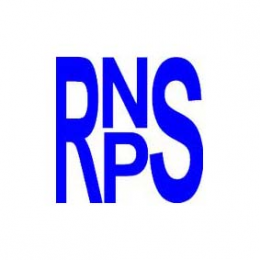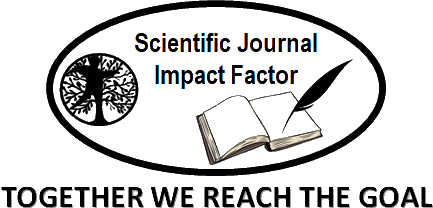Consideraciones actuales sobre lesión axonal traumática
Palabras clave:
lesión axonal traumática, trauma craneoencefálico, esferoides axonalesResumen
Fundamento: la lesión axonal traumática ha emergido como una de las lesiones más devastadoras del trauma craneoencefálico en los últimos años, y es responsable de más de un tercio de las muertes en estos casos.
Objetivo: profundizar en el conocimiento de la lesión axonal traumática.
Métodos: se realizó una revisión bibliográfica en las bases de datos SciELO, MedLine y PubMed en el mes de enero 2017, de las 33 fuentes seleccionadas mediante el gestor de búsquedas y administrador de referencias EndNote, el 50 % corresponde a los últimos cinco años.
Desarrollo: se describió la morfofisiología de la célula neuronal, la fisiopatología y los cambios celulares de la lesión axonal traumática, así como su cuadro clínico. Se enfatizó en cómo se realiza su diagnóstico.
Conclusiones: esta enfermedad es producida por el desplazamiento inercial centrípeto del cráneo durante los movimientos de aceleración y desaceleración en el momento del trauma. En el axón ocurren los principales cambios histopatológicos: formación de bulbos de retracción axonal, acúmulo de células microgliales y degeneración walleriana. El diagnóstico se basa en la clínica del paciente, estudios radiológicos, histopatológicos y de biomarcadores.
DeCS: LESIÓN AXONAL DIFUSA/diagnóstico; LESIÓN AXONAL DIFUSA/complicaciones; LESIÓN AXONAL DIFUSA/fisiopatología; LESIÓN AXONAL DIFUSA/mortalidad; TRAUMATISMOS CRANEOCEREBRALES/mortalidad.
Descargas
Citas
1. Gordillo Escobar E, Egea Guerrero J, Rodríguez Rodríguez A, Murillo Cabezas F. Utilidad de los biomarcadores en el pronóstico del traumatismo craneoencefálico grave. Medicina Intensiva [Internet]. 2016 [citado 24 Ene 2019];40(2):[aprox. 5 p.]. Disponible en: http://www.medintensiva.org/es/linkresolver/utilidad-los-biomarcadores-el-pronostico/S0210569115002521/.
2. Mosquera Betancourt G, Varela Hernández A. Trauma craneoencefálico. En: Cruz L, editor. Traumatismo craneoencefálico en el adulto. Temas para la Atención Primaria de Salud. La Habana: Ciencias Médicas; 2011. p 1.
3. Maya Entenza CM. Traumatismos craneoencefálicos. Urgencias Neurológicas. La Habana: Ciencias Médicas; 2015. p 246.
4. Villarreal Reyna G. Lesión axonal difusa, contusión y daño del tallo cerebral. Neurocirugía Endovascular [Internet]. 2012 [citado 24 Ene 2019]:[aprox. 5 p.]. Disponible en: http://www.neurocirugiaendovascular.com/pdf2/LESION %20AXONAL% 20DIFUSA,%20CONTUSION%20Y%20LESION%20DEL%20TALLO%20ENCEFALICO.pdf
5. Mosquera Betancourt G, Van Duc H, Casares Delgado JA, Hernández González EH. Caracterización de los pacientes con traumatismo craneoencefálico y lesión axonal traumática. AMC [Internet]. 2016 [citado 24 Ene 2019];20(6):[aprox. 10 p.]. Disponible en: http://scielo.sld.cu/scielo.php?script=sci_arttext&pid=S1025-02552016000600004&lng=es
6. Reis C, Wang Y, Akyol O, Ho WM, Li RA, Stier G, et al. What’s new in traumatic brain injury: update on tracking, monitoring and treatment. International Journal of Molecular Science [Internet]. 2015 [citado 24 Ene 2019];16:[aprox. 9 p.]. Disponible en: http://www.mdpi.com/1422-0067/16/6/11903
7. Amaro P, Pajarito L. Daño axonal difuso post trauma craneoencefálico. Cuad Neurol [Internet]. 1999 [citado 24 Ene 2019];23(3):[aprox. 7 p.]. Disponible en: http://publicacionesmedicina.uc.cl/cuadernos/1999/pub_23_99.html#
8. Neuro&Spine de Nayarit [Internet]. Lesión axonal difusa [actualizado 15 Dic 2016; citado 24 Ene 2019]. Disponible en: https://neuroqx.wordpress.com/2012/12/15/lesion-axonal-difusa/.
9. Ignacio Rey J. Traumatismo encefalocraneano, lóbulo frontal y trastornos cognitivos. 2011 [citado 11 Nov 2019]. En: Medicina y Ley. Foro de medicina legal y bioética [Internet]. Disponible en: http://medicinayle y.blogspot.com/2011/04/1.html
10. Johnson V, Stewart W, Smith D. Axonal pathology in traumatic brain injury. ExpNeurol [Internet]. 2014 [citado24 Ene 2017];246(3):[aprox. 10 p.]. Disponible en: https://www.ncbi.nlm.nih.gov/pubmed/22285252
11. Raisanen J, Ghougassian DF, Moskvitch M, Lawrence C. Diffuse axonal injury in a rugby player. Am J Forensic Med Pathol [Internet]. 1999 [citado 24 Ene 2019];20(1):[aprox. 2 p.]. Disponible en: http://www.ncbi.nlm.nih.gov/pubmed/10208342
12. Van Duc H. Caracterización de los pacientes con daño axonal difuso en el Hospital Universitario "Manuel Ascunce Domenech" [Tesis]. Camagüey: Universidad de Ciencias Médicas de Camagüey; 2015.
13. Herrera Batista A, Iglesias Ramírez B, Rodríguez Pérez I, Pomares Bory E, et. al. Tejidos básicos. En: Collazo S, editor. Morfofisiología. Tomo I. 2da ed. La Habana: Editorial Ciencias Médicas; 2015. p. 203-204.
14. Gartner LP, Hiatt JL. Tejido nervioso. En: Texto Atlas de Histología. 2da ed. México D.F: McGraw–Hill Interamericana; 2002. p. 179-211.
15. Alicia Brusco H, López Costa JJ, Fabián Loidl C. Tejido nervioso. En: Histología médico-práctica. Barcelona: Elsevier; 2014. p. 115-117.
16. Máximo Mujica B, Guido González T, Larrín Galindo C, Miller Tejeda P, Castoldi F. Resonancia magnética cerebral en daño axonal difuso. Rev Chilena Radiol [Internet]. 2003 [citado 24 Ene 2019];9(4):[aprox. 4 p.]. Disponible en: http://www.scielo.cl/scielo.php?pid=S0717-93082003000400004&script=sciabstract
17. Prat Acín R, Calatayud Maldonado V. Daño axonal difuso: factores pronósticos clínico-epidemiológicos. Neurocirugía [Internet]. 1997 [citado 24 Ene 2019];8(2):[aprox. 4 p.]. Disponible en: http://www.revistaneurocirugia.com/es/dano-axonal-difuso-factores pronosticos/articulo/S1130147397710303/.
18. Smith D, Hicks R, Povlishock JT. Therapy development for diffuse axonal injury. Journal of Neurotrauma [Internet]. 2013 [citado 24 Ene 2019];30:[aprox. 23 p.]. Disponible en: https://www.ncbi.nlm.nih.gov/pubmed/23252624
19. Peregrino FC. Traumatismo craneoencefálico: fisiopatología, monitorización y tratamiento. Neurolatinvet [Internet]. 2010 [citado 24 Ene 2019];1(1):[aprox. 30 p.]. Disponible en: https://www.researchgate.net/profile/FernandoPellegrino2/publication/26 0418907TRAUMATISMOCRANEOENCEFALICOFISIOPATOLOGIAMONITORIZACIONYTRATAMIENTO/links/0deec53114b9b7ea1d000000.pdf
20. Siedler Declan G, Chuah MI, Kirkcaldie MT, Vickers JC, King AE. Diffuse axonal injury in brain trauma: insights from alterations in neurofilaments. Frontiers in Cellular Neuroscience [Internet]. 2014 [citado 24 Ene 2019];8(429):[aprox. 10 p.]. Disponible en: http://www.fronteirsin.org/journal/10.3389/fncel.2014.00429/abstract
21. Adams JH, Graham DI, Gennarelli TA, Maxwell WL. Diffuse axonal injury in non-missile head injury. J Neurol Neurosurg Psychiatry [Internet].1991 [citado 24 Ene 2019];54(6):[aprox. 3 p.]. Disponible en: https://www.ncbi.nlm.nih.gov/pubmed/1880506
22. Grady M, Mc Laughlin M, Christman C, Valadka A, Fligner CL, Povlishock JT. The use of antibodies targeted against the neurofilament subunits for the detection of diffuse axonal injury in humans. J Neuropathol Exp Neurol [Internet]. 1993 [citado 24 Ene 2019];52(1):[aprox. 10 p.]. Disponible en: https://www.ncbi.nlm.nih.gov/pubmed/8440996
23. Buki A, Okonkwo DO, Povlishock JT. Post injury cyclosporin a administration limits axonal damage and disconnection in traumatic brain injury. J Neurotrauma [Internet]. 1999 [citado 24 Ene 2019];16:[aprox. 12 p.]. Disponible en: http://online.liebe rtpub.com/doi/abs/10.1089/neu.1999.16.511
24. Lafuente Sánchez JV. Daño axonal difuso. Importancia de su diagnóstico en medicina forense. Cuad Med Forense [Internet]. 2005 [citado 24 Ene 2019];11(41):[aprox 9 p.]. Disponible en: http://scielo.isciii.es/scielo.php?script=sci_arttext&pid=S1135-7606200 5000300001
25. Hostiuc H, Pirici D, Negoi I, Ion DA, Ceausu M. Detection of diffuse axonal injury in forensic pathology. Rom J Legal Med [Internet]. 2014 [citado 24 Ene 2019];22(3):[aprox. 8 p.]. Disponible en: http://www.rjlm.ro/index.php/arhiv/370
26. Hospital Privado de Comunidad [Internet]. Degeneración walleriana: hallazgos en resonancia magnética. A propósito de un caso [actualizado 7 Ene 2017; citado 24 Ene 2019]. Disponible en: http://www.hpcorg.ar/v2/vartrev.asp?id=540&offset=0
27. Junqué C. Valoración del daño axonal difuso en los traumatismos cráneo-encefálicos. Escritos de psicología [Internet]. 2008 [citado 24 Ene 2019];2(1):[aprox. 10 p.]. Disponible en: http://scielo.isciii.es/scielo.php?script=sciarttext&pid=S1989-38092 008000300007
28. Instituto Cajal [Internet]. Crecimiento axonal y función del segmento inicial del axón. [actualizado 07 Feb 2016; citado 24 Ene 2017]. Disponible en: http://www.cajal.cs ic.es/departamentos/garrido-jurado/garrido-jurado.html
29. Matthew Hemphill A, Dauth Steven S, Chung Jong Y, Borna Dabiri E, Kit Parker K. Traumatic brain injury and the neuronal microenvironment: a potential role for neuropathological mechanotransduction. Neuron [Internet]. 2015 [citado 24 Ene 2019];85(6):[aprox 12 p.]. Disponible en: https://www.sciencedirect.com/science/article/pii/S0896627315001567?via%3Dihub
30. Roca Goderich R, Smith Smith V, Paz Presilla E, Losada Gómez J. Traumatismos craneoencefálicos y raquimedulares. En: Robert L, Hechavarría A, editores. Temas de Medicina Interna. 4ta ed. La Habana: Ciencias Médicas; 2002. p. 440.
31. Neurowikia [Internet]. Fisiopatología del traumatismo en el sistema nervioso. [actualizado 17 Feb 2016; citado 24 Ene 2019]. Disponible en: http://www.neuro wikia.es/content/fisiopatolog%C3%AD-del-traumatismo-en-el-sistema-nervioso
32. Kay A, Petzold M, Kerr G, Keir E, Thompson E, Nicoll JA. Alterations in cerebrospinal fluid apolipoprotein E and amyloid beta-protein after traumatic brain injury. J Neurotrauma [Internet]. 2003 [citado 24 Ene 2019];20(7):[aprox. 9 p.]. Disponible en: https://www.ncbi.nlm.nih.gov/pubmed/14588111
33. Emmerling MC, Morganti-Kossmann T, Kossmann PF, Stahel MD, Watson MD, Evans LM, et al. Traumatic brain injury elevates the Alzheimer's amyloid peptide A beta 42 in human CSF. A possible role for the nerve cell injury. Ann N Y Acad Sci [Internet]. 2000 [citado 24 Ene 2019]; 903(8): [aprox. 4 p.]. Disponible en: https://www.ncbi.nlm.nih.gov/pubmed/10818496












